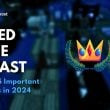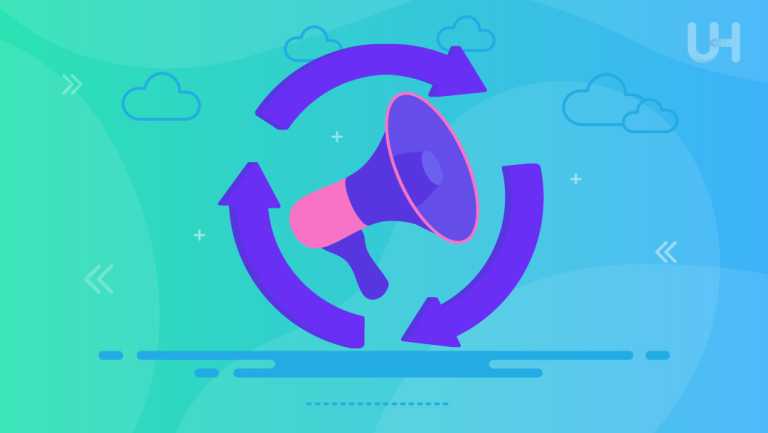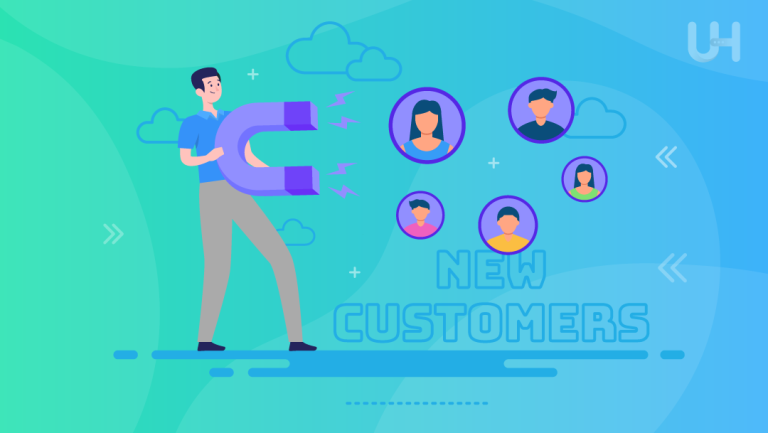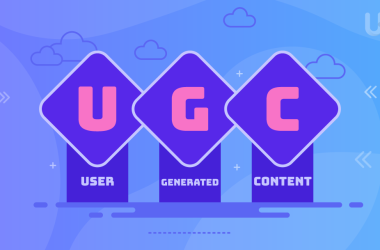The eCommerce marketing strategies play a vital role in driving sales and business growth. With a competitive online market, reaching the right audience requires a well-planned approach. Effective strategies help businesses stand out, attract potential customers, and build brand loyalty. By using a combination of organic, paid, and customer-focused tactics, companies can engage users across various touchpoints. This diverse approach creates a stronger presence, drives consistent traffic, and boosts conversions. For long-term success, eCommerce businesses need to blend these strategies, ensuring steady growth and lasting customer relationships.
In this blog, we will discuss the actionable steps and give insights into both foundational and advanced marketing strategies that will be tailored to ensure success in eCommerce. Implementing a thoughtfully curated eCommerce digital marketing strategy is crucial for driving traffic and increasing online sales in today’s competitive market.
Build a Strong Foundation for Your eCommerce Marketing Strategy
In eCommerce, a solid marketing base is required to succeed. Define your audience, outline clear goals, and decide on the best platforms that will create an effective strategy that hits the right people, measures progress, and makes use of the best tools.
Define Your Target Audience
Knowing who your customer is marks the beginning of a winning marketing strategy. Knowing who they are, what they like, and how they behave will help you shape your approach to his or her needs. Customer insights and effective research on market trends through strategic marketing will be necessary to identify the target audience effectively.
Importance of Demographics, Behavior, and Preferences
- Demographics reveal key details about age, gender, location, and income levels, thereby helping you adapt to the messaging for your audience.
- Behavior insights– what appeals to your customers and how they interact with your site-browsing habits and buying patterns
Preferences highlight specific interests; thereby, you promote products with that interest in mind. Leveraging a solution like Cloudflare VPS hosting server helps ensure your product’s online presence optimizes for speed and security.
Use Tools like Google Analytics and Facebook Insights
- Google Analytics: It tracks visitors and the popular pages together with the conversion paths toward an understanding of what makes people visit your site.
- Facebook Insights: Understand the demographics of your followers, trends in engagement over time, and audience preferences on social media.
These tools give actionable data to make campaign creation easier because you’re targeting what your audience wants.
Set Clear Goals and KPIs
Without clear goals, it’s hard to measure success or identify areas for improvement. Setting specific, measurable objectives keeps your team focused and aligned.
- Specific: Identify what you want to accomplish. For instance, “increase website conversions.
- Measurable: Establish metrics so that how you are doing can be monitored. For instance, improve by 100 new subscribers every month.
- Achievable: Formulate goals that are possible within the resources and capabilities that you currently have.
- Relevant: Ensure that goals are aligned with general business objectives, including revenue increase or brand exposure.
- Time-bound: Install deadlines in which you’ll work according to your goal. For example, 15% hike in conversions in the space of three months.
Ready to Take Your Online Store to The Next Level
Start implementing these powerful eCommerce marketing strategies and watch your sales grow! For reliable hosting that scales with your success, check out Ultahost’s eCommerce Hosting and ensure your website runs smoothly, even during peak traffic.
Optimize Your Website for Conversions
Your website has to be perfectly optimized in order to get the visitor to become a loyal customer. This will ensure the user experience is seamless when elements are tested to be made more appealing and, in turn, ensure designs for effective product pages. Thus, the journey from browse to buy will be quite smooth. Social media plays a vital role in eCommerce marketing strategies, allowing brands to engage and connect with their audience directly.
User Experience (UX) Design
It will be an experience that users want to come and go back to check on other products. Having a navigational system that will not confuse the user with what they want soon will keep the visitors for longer. Simplification of the menu of the website together with categories making common sense will guide the user around without getting lost. An addition of a search bar proves invaluable since it gives an option of finding exactly what one wants directly.
Mobile Optimization
Mobile optimization is equally important, as most eCommerce traffic now comes from mobile devices. A responsive design that adapts to various screen sizes ensures your site’s buttons, images, and text are properly displayed. Testing your site on mobile helps you spot any issues that might deter shoppers and ultimately improves accessibility for all users.
Fast Load Times
Another highly critical factor in the realm of UX design is rapid loading times. When a site takes longer to load, people leave that slow site, thereby growing the bounce rates. The above factors enhance speed and minimize time for customers: compress images, reduce file size, and optimize scripts. Finally, by making checkouts easier by streamlining them through step reduction and allowing guest checkout with all shipping costs visible, you have a dramatic decrease in cart abandonment, and thus buying is so much quicker and easier.
A/B Testing
A/B testing is an effective tool to optimize user experience by knowing what they like the most. User testing different versions of headlines, CTAs, and product pages provides valuable data on user preferences.
Testing Headlines
Headlines are a good starting point. You can experiment with different tones, lengths, and wording to see what draws the attention of users and keeps them interested. A good headline is not only an eye-catcher but also raises the curiosity of users, who then feel the urge to read more and discover more.
Testing different CTAs can also yield great results. A slight variation in CTA buttons, such as color or changing the wording from “Add to Cart” to “Buy Now,” can be the difference-maker in click-through rates and nudging users toward the next step in their buying process.
Optimizing Product Pages
Another good place for A/B testing is the product pages. How the product detail is laid out, where an image goes, or what detail is prioritized can make a difference in how well the page communicates with the user. Good product pages are interesting and informative; there’s a great opportunity for customers to feel confident in their purchasing decisions. They can be fine-tuned using A/B testing, thereby enhancing conversion rates through actual user behavior. The internet breaks down geographical barriers, allowing businesses with scalable enterprise hosting from Ultahost to reach a global audience and expand their market presence beyond local boundaries.
Product Pages and Descriptions
Product pages are usually the deciding moment for buyers. A product description must be clear and compelling, highlighting key benefits, unique features, and practical uses, talking directly to the needs of your customers. Using simple language tailored to your audience not only educates but also persuades, showing why the product is worth buying.
High-Quality Images
Images also play a significant role in the success of product pages. Good, professional images showing the product from different angles help customers to get a good view. Adding zoom options and lifestyle images (showing the product in use) helps customers to imagine the product in their own lives, further building their confidence in the purchase.
This would be the most important form of social proof: customer reviews and star ratings on the product pages. Most of the time, prospective buyers would feel more at ease purchasing the product if they read excellent comments from other customers; it reduces their hesitation to buy. Product pages must have compelling descriptions, attractive images, and real customer feedback, making for a compelling experience that informs as well as persuades a customer to make a move. To stay competitive, brands should continuously update their eCommerce marketing strategies to match evolving customer expectations and trends.
With such optimizations, your website will deliver a streamlined and enjoyable shopping experience, which leads to more conversions and a better relationship with your audience.
Elevate Your Customer Relationship Management Now!
Ready to streamline your customer relationship management? Integrating the best CRM hosting from UItaHost with your digital marketing enhances your business efficiency and customer interactions. Boost your productivity and improve customer satisfaction!
Leverage SEO for Better Visibility
Among the key paths to increase your eCommerce site’s visibility is through search engine optimization. Ensuring you employ the right keyword research, on-page optimization, and content marketing will drive organic traffic, improving your search rankings. Effective eCommerce marketing strategies like SEO and content marketing help boost your site’s visibility and attract potential customers.
Keyword Research
The essence of SEO is keyword identification. The names of the products and categories under which your eCommerce business falls are keywords that allow the search engine to understand your content further. This relevance drives organic traffic because it connects you with your target market, who are also actively searching for your products.
Conduct research using keyword research tools like Google Keyword Planner and Ahrefs. Google Keyword Planner is great for keyword ideas on your products with other information like a measure of search volume and levels of competition. Ahrefs offers a complete depth analysis of keyword difficulties, search volumes, and their ranking potential. Using such analysis, you select the most valuable keywords on which to focus in creating your content and ultimately drawing more visitors to your website.
On-page Optimization
Once you have your keywords, that is when the on-page SEO optimization begins. In it, you’re optimizing several things on your website to appear and function better.
Optimize the meta title and meta description on each product page to use relevant keywords in a natural manner that better helps search engines understand what your pages contain. Well-written meta titles and meta descriptions also encourage users to click over to your website if these appear in search results.
Besides meta tags, optimize alt tags for the images of your products. The alt tags provide context to search engines and make content more accessible to blind readers. Including relevant keywords in the alt tag improves your rank on the search.
Another key region for optimization is formed in the internal link. Here, it links your related products and categories to check out within your site which takes visitors deeper into other related content and products. Additionally, this makes the crawlability of your site successful from the search engines as well and hence lifts the overall effectiveness of all your SEO efforts.
Content Marketing for SEO
Content marketing is among the most viable tools one can use to drive organic traffic and consequently elevate SEO rankings. This approach, with good value through content, will attract visitors and drive your brand an authority in a niche.
Think of writing blogs, buying guides, and tutorials about your products. This kind of resource is informative to the reader and contains keywords that can help enhance search visibility. A buying guide on a specific category may rank well in the search results and bring you some potential customers.
The key is the creation of a trust model for your users. People will trust the sources in which they can find worthwhile information about anything. It’s that easy, when it comes to users, people will begin trusting your brand more because the chances for successful conversion have also increased as trust grows.
Every quality content that you put up, gives you the chance to create backlinks. Once your informative article or guide appears on other sites, this tells the search engine that your content is a good one, and thus it should rank you more visible over time.
This will be possible by getting into the SEO world of keyword research, on-page optimization, and effective content marketing for your eCommerce sites, thus bringing organic traffic to your website. This ensures not only attracting potential customers but also building trust in your long-term relationships.
Establishing brand trust and credibility is an effective way of engaging and maintaining the customer. Social proof is indeed one of the effectiveness, such as a testimonial, ratings, and reviews by a user, which sets credibility into the customers’ minds. Another great means of establishing a connection with the customer emotionally is through brand storytelling. An “About Us” page or a brand story video communicates your mission and values, which makes your brand human. Moreover, you will make your brand more credible by working with renowned names in the industry. Brands can improve their reputation, hence gaining the audience’s trust, by affiliating with known names in a specific industry.
Social Media Marketing is a great tool for engaging customers and converting them. Through the identification of the appropriate platforms, content that can engage, and targeted advertisements, you will reach your audience and connect with them effectively.

Identify Relevant Platforms
The selection of the proper social media platforms determines whether to reach the target audience or not. Many firms will find platforms such as Instagram, Facebook, or even TikTok very useful because for most B2B and B2C marketing would be very effective and highly useful. Instagram’s prime feature is visualism which makes it suitable for promoting products through good visuals, images, and photos. Facebook marketing has various options in functionalities that can enable firms to create communities that assist in engaging consumers. TikTok features short, attention-grabbing videos, and lots of them can spread like wildfire very fast. This makes it an excellent tool for creative marketing campaigns. It’s about knowing where your audience spends its time and focusing efforts on the right platforms.
Create Engaging Content
The most important element in catching attention and interaction on social media is engaging content. A variety of content types is what keeps your audience interested. Product showcases would help you emphasize its features and benefits while attracting users to consider how such products could be a great fit for them. A user-generated content, where you can repost customer images and reviews, helps you grow your community. And build trust where potential buyers can see genuine people using your products. Behind-the-scene postings help the customer find the personality of the brand. And the values held by that brand which lets them attach themselves. This diversity keeps your content updated, which motivates you to engage. Engagements then lead to a higher rate of conversion.
Social media advertising gives you some targeted options that may improve your marketing efforts. On Facebook and Instagram, you may create highly targeted ads based on the demographics, interests, and behaviors of a user. Such precision will always help you target the right kind of audience for your message with a higher probability of converting them. So, when designing ads, think in terms of messaging and visuals, making the ad attention-grabbing.
This could capture those who might be interested in your products and who are likely to purchase them. You track visitors by having them engage with your website or social media. Then, you display retargeting ads reminding them of the items they have viewed or left behind in their cart. Such a gentle reminder may send them back to your site to finish the purchase. In summary, targeted ads and retargeting strategies can increase customer engagement and lead to effective conversions on social media. Paid ads are one of the fastest-growing eCommerce marketing strategies for reaching targeted users and driving conversions quickly.
Use social media marketing to your advantage in reaching out to your target audience, increasing brand awareness, and, ultimately, enhancing sales.
Leverage Email Marketing for Retention and Conversions
Email marketing is a strong retention and conversion strategy. A well-built subscriber list, the right segmented audience, an effective email marketing campaign, and automation of the right workflows will serve to maximize the effectiveness of email marketing.
Build a Subscriber List
A solid subscriber base will enable you to successfully execute your email marketing campaigns. Reward subscribers, be it in terms of discounts or free, premium content, to acquire more subscribers. Prominent calls-to-action for newsletter sign-ups should be placed on your site, and you can also promote your newsletters via social media. It may also be useful in increasing subscribers and engaging responses with giveaways or contests.
Segment Your Audience
Segmentation helps you serve the right content to the target audience. Split your list according to the purchase history and browsing behavior so that the messaging can be done accordingly. This will improve open rates and conversions since customers react more to the relevant content.
Design Engaging Campaigns
Engaging email campaigns capture the attention of the audience and bring action. Use a welcome series for new subscribers, including a warm greeting and special offers. Use abandoned cart reminders to nudge customers back to their carts and offer personalized product recommendations based on past purchases. Customer retention is a core focus of many eCommerce marketing strategies, especially through email campaigns and loyalty programs.

Automated Marketing Workflows
Automated workflows for emails help make your campaigns more consistent. Trigger emails based on specific activities, such as when a person signs up or abandons a cart. These time-sensitive communications will keep your brand at the forefront of their minds, fueling relationships, and these lead to increased conversion rates.
Succeeding with email marketing can help you develop long-term relationships with your customers, enhance retention, and drive conversions to support profitable, sustainable growth in an eCommerce business.
Implement Paid Advertising for Quick Results
Paid advertising is very effective for delivering quick results in your eCommerce marketing strategy. You will be able to reach customers and generate traffic through Google Ads, social media ads, and retargeting ads.
Google Ads (PPC)
Google Ads would be important to target search-based purchase intent since, through PPC advertising, your ads would appear right at the top of search results for relevant keywords when potential customers are actively looking for a product. There are other campaign types that you can choose from, and these include: Search ads They appear when users enter specific queries, so they are perfect for high-intent shoppers. Shopping ads They include images of the products with descriptions and prices directly added to the search results, and hence, they appear on various websites and apps to enhance brand awareness and user engagement.
Social media ads do indeed work for visual engagement: if you’re selling to audiences on Instagram or Pinterest, then your products should show in a more dynamic form so that you’re likely to reach the consumer in a better way. Instagram-based eye-catching images or videos can drive the exploration of the brand. Pinterest advertising utilizes the focus of its application to discover products while hunting for inspiration. It also helps by giving detailed targeting to any demographics.
Retargeting Ads
Retargeting ads convert window shoppers to buyers because it adverts for the users who used to visit your site but never bought. This reminds one of the products they were viewing, thus increasing the chances of them coming back. You can retarget on Google, Facebook, and even on Instagram. These adverts can be targeted to the users based on previous behavior; for example, reminding them of abandoned carts, therefore, improving conversion rates.
With Google Ads, social media ads, and retargeting campaigns you’d get quick results and drive as much traffic as possible to your e-commerce site – which will lead to direct sales and increased brand coverage.
Utilize Influencer Marketing to Reach New Audiences
Using influencer marketing, you can effectively reach new audiences. First, you will need to find the right influencers who share your brand values and resonate with your target audience. Find influencers whose followers reflect your customer demographics and interests. Then, establish mutually beneficial partnerships by proposing ideas such as affiliate programs or sponsored posts that will allow influencers to promote your products while earning incentives. Track website traffic and other engagement metrics alongside determining how many sales each post has influenced; a measurement of return on investment.
Optimize Your eCommerce Site for Mobile
Mobile optimization of an eCommerce site is one of the most important aspects of this digital landscape. The mobile-responsive design will help your site render seamlessly to the end-users. This website automatically adjusts to all types of screen sizes. It ensures users can easily navigate, browse through the products, and eventually make purchases on mobile.
Mobile payments allow the checkouts to be faster, more convenient and even reduce friction; conversions can be made, therefore more effectively. Introducing Apple Pay and Google Pay a customer will purchase things in a matter of seconds, without having to type payment information each time.
Furthermore, mobile-optimized ads should be developed to ensure proper marketing. Optimize your ads to load faster and to appear correctly on smaller screens, as these are mostly seen on social platforms. With attention-grabbing visuals and calls to action, this will increase traffic to your mobile site and subsequently sales and customer engagement.
Seasonal and Event-Based Promotions
Seasonal and event-based promotions are one of the most important means of attracting high-intent shoppers. Planning for peak seasons like holidays and Black Friday allows you to align marketing efforts with the time when consumers are actively looking for the product. Such campaigns would increase visibility drive traffic to your eCommerce site and maximize sales at the highest demand times. Seasonal promotions are effective in marketing your ecommerce website to capitalize on high-intent shopping periods and drive peak sales.
Launching event-specific offers, be it a time-bound deal for the launching of the product or any new collection, can raise the enthusiasm of the customer. They not only drive the sales to the immediate point but also create a lot of excitement around your brand, driving both new and repeat traffic.
Exclusive, only- available-for-a-brief-time products can generate the need for urgency leading to more sales. You want to buy something quick in case it runs out for a limited time only. FOMO sets a customer to make purchases and engage more with a brand for increased revenue generation.
Invest in Affiliate Marketing and Referral Programs
Affiliate marketing is a good investment to reach larger audiences and drive traffic to an eCommerce site. Through partner affiliates, you can enter their existing audiences and even expand into new markets as well. This symbiotic relationship will motivate affiliates with a share of the money earned through sales. Since they will be making sales, they will do active promotions for your brand or products. Influencer partnerships are becoming popular eCommerce marketing strategies, helping brands reach new audiences and build credibility.
Referral Incentives for Existing Customers
Referral programs can be a very effective way to achieve new customers. You will generate a very powerful channel for word-of-mouth marketing. As you are offering incentives for current customers to refer friends and family. You are inspiring present customers to share your excellent experiences with your brand with others by offering discount benefits, free products, etc, which brings in a good number of new customers to your business. Mainly those who are likely to get converted because of the assurance offered by personal recommendations.
Track Affiliate and Referral Performance
The best way to maximize affiliate and referral programs is by tracking performance and ROI for each channel. Utilize tracking tools to track traffic, conversion rates, and sales generated from these efforts. You can then use this information to identify which partnerships are the most successful and adjust your strategies accordingly to make sure that investments are maximized to produce the best returns. Analyzing performance metrics is essential to refine eCommerce marketing strategies and ensure they deliver optimal results.
Conclusion
eCommerce marketing strategies—including optimizing your website for conversions, leveraging SEO, utilizing social media and email marketing, implementing paid advertising, and investing in affiliate and referral programs—can significantly impact your online sales. Each strategy offers unique opportunities to reach and engage potential customers, drive traffic, and ultimately boost conversions.
As you implement these digital marketing strategy for ecommerce, remember to experiment with different approaches and measure their effectiveness. Continually optimizing your marketing tactics based on data and performance metrics will help ensure sustained growth for your eCommerce business. Stay adaptable and responsive to market trends, and your efforts will yield long-term success.
To support your outbound marketing efforts, ensure your communications are reliable and cost-effective with UltaHost’s best email hosting server. Experience top-quality service and seamless email management without breaking the bank.
FAQ
What are some essential eCommerce marketing strategies?
Key strategies include SEO, email marketing, paid ads, influencer partnerships, and retargeting.
Why is an online sales strategy important?
A defined strategy helps increase traffic, improve conversions, and achieve sustained sales growth.
How does SEO benefit my eCommerce website?
SEO drives organic traffic by improving your site’s visibility in search engine results, attracting high-intent shoppers.
How can social media boost my online sales?
Social media promotes engagement, brand awareness, and direct sales through targeted ads and content.
How do I measure the success of my e-commerce strategies?
Track metrics like conversion rates, ROI, and traffic using tools like Google Analytics and Facebook Insights.
What are successful eCommerce strategies for peak sales seasons?
Plan seasonal discounts, limited-time offers, and exclusive launches to capture high-intent shoppers.
Why are retargeting ads effective for eCommerce?
Retargeting ads re-engage past visitors, reminding them of products they viewed and prompting conversions.
















